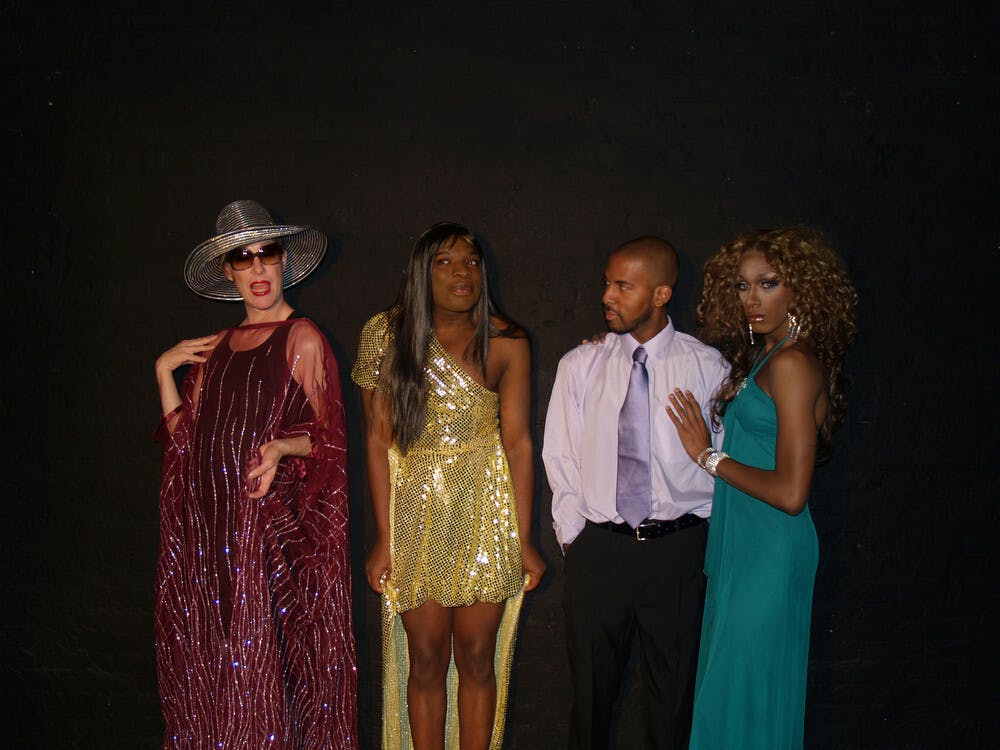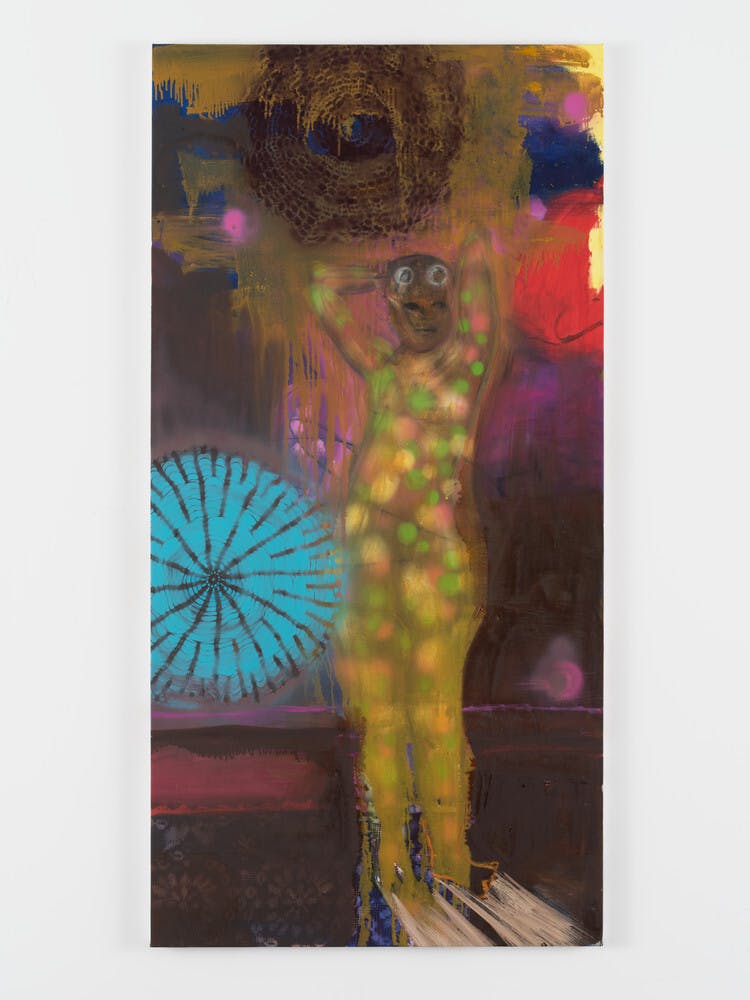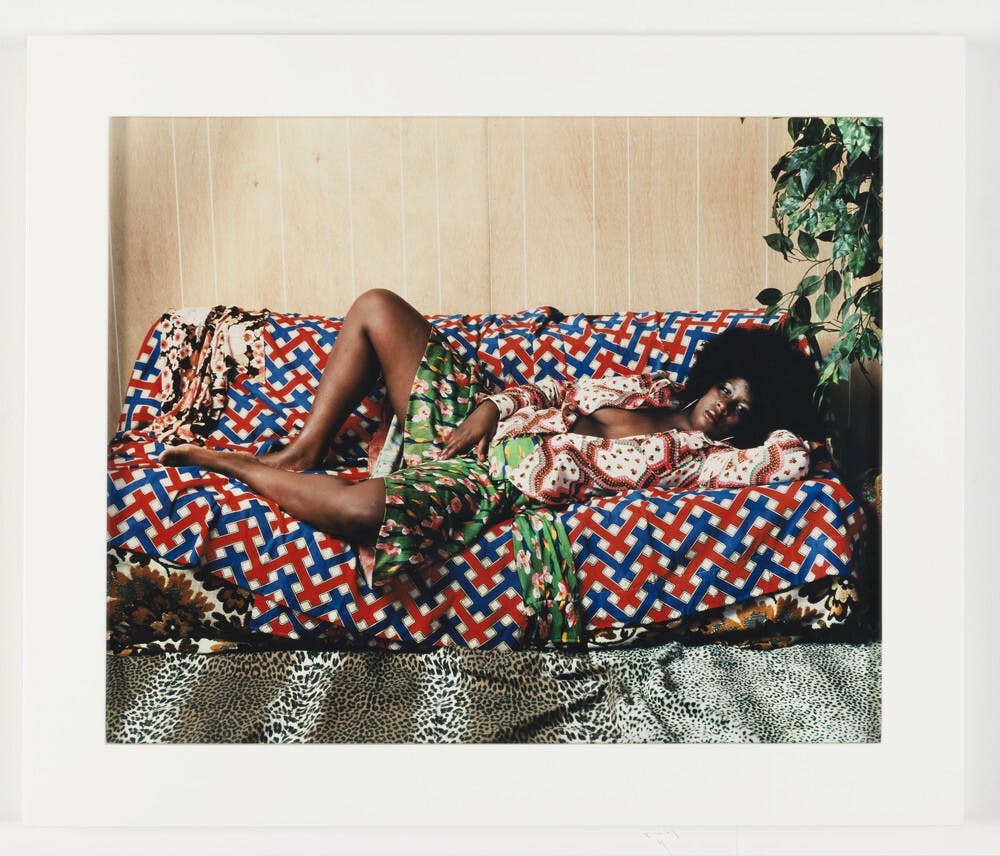Pride
The works in this collection take pride in a multifaceted queerness. These queer artists of color transcend gender boundaries, transgress censorship, subvert the canon to give visibility to marginalized people, and use objects and materials as stand-ins for their LGBTQIA+ identity.
Linzy pokes fun at stereotypes often associated with gender, race, and sexuality
In Melody Set Me Free, Kalup Linzy fashions himself in a long brown wig and womenswear. He plays the fictional character Patience O’Brien, who, against the better judgment of family and friends, follows her singing career to New York City.
In works such as this, mosie romney uses fantasy as a touchpoint to examine the complications of seeing and being seen. Floating between the background, foreground, and middle ground, it’s unclear if the figure is forming or vanishing, perhaps alluding to their journey of self-actualization.
When Isaac Julien questioned Langston Hughes’s sexuality, the poet’s estate refused to grant him permission to use Hughes’s poems in his film Looking for Langston. The film became a participatory public performance, (Undressing Icons (Looking for Langston), documented in photographs such as Untitled (Newcastle-on-Tyne).
With her legs splayed and her head resting upon one arm, a Black woman clad in a patterned blouse and skirt gazes out toward viewers while grasping herself. Her form is expansive—sprawled legs signal her dominance in celebration of Black femme identity and sexuality.
Hanging from a wire hanger hooked on a metal shower rod is Elle Pérez's chest binder, a clothing item used to compress or minimize breasts and achieve a flattened chest profile. The binder is tattered, frayed, and worn down by its usage, signifying how long they’ve had to use the item, as well as its risks and rewards.




